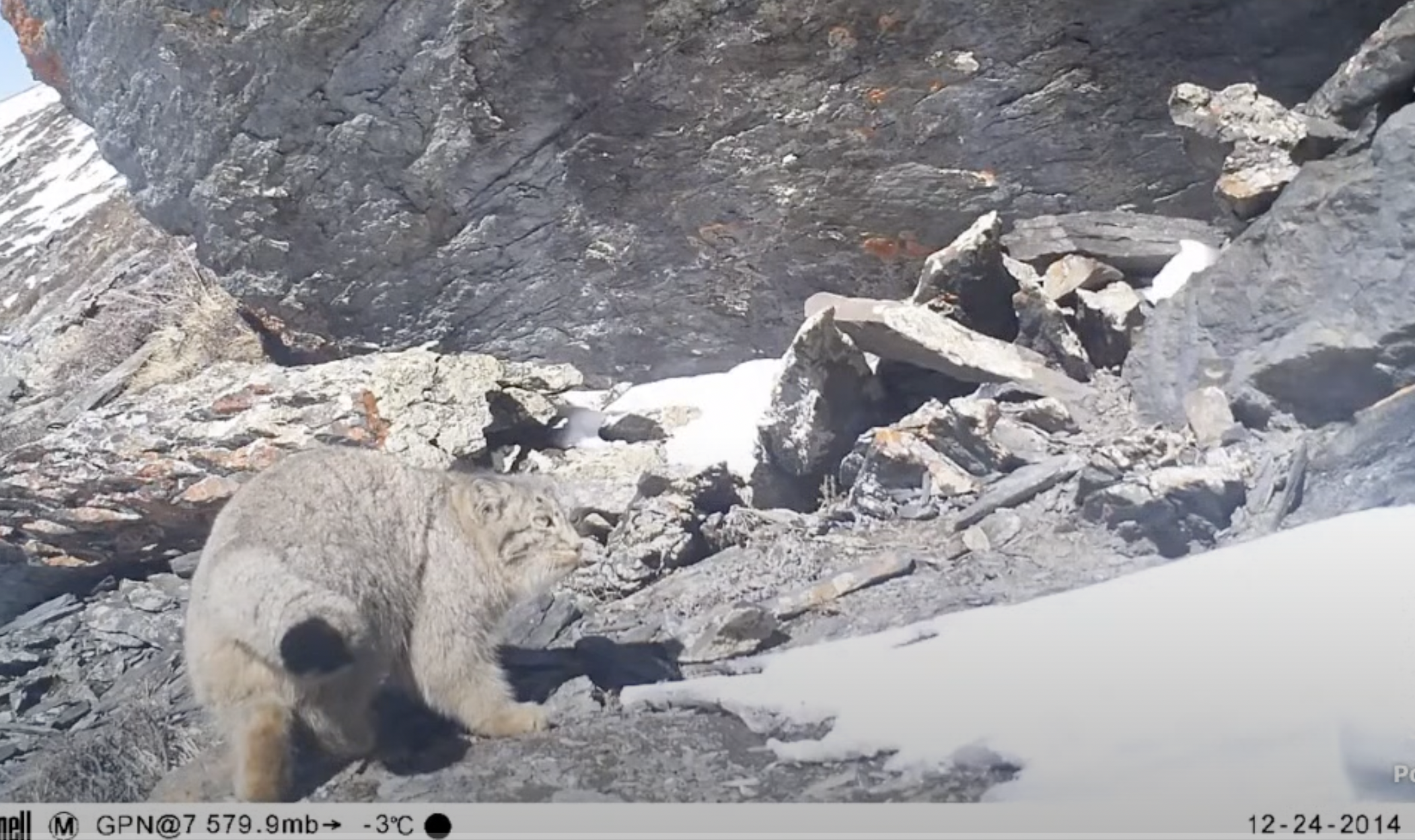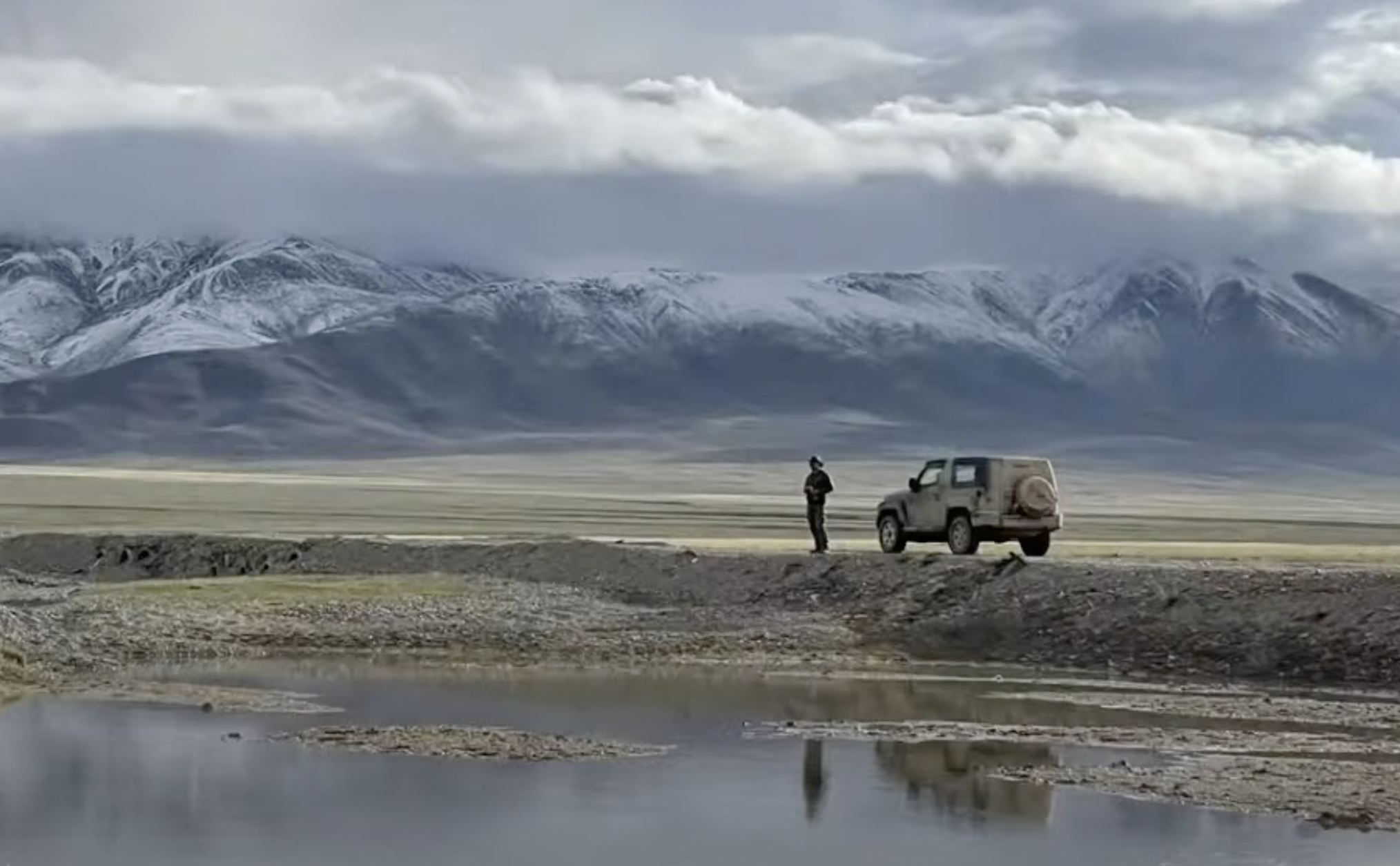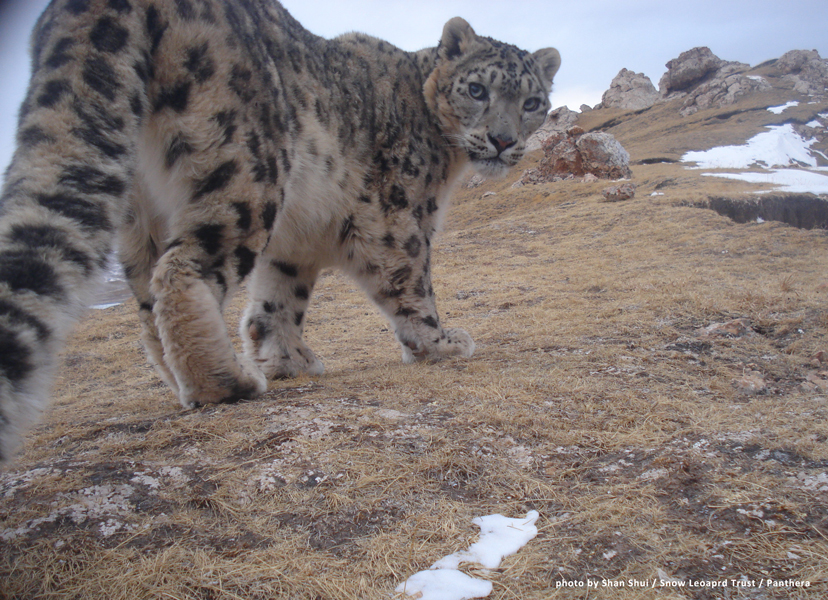Nepal has a long history in snow leopard conservation. Rinzin Phunjok Lama from the Third Pole Conservancy will share updates of the teams ongoing snow leopard population survey in Humla, west Nepal. He will share how community conservation provides the foundation for their monitoring efforts. Rinzin and his colleagues are actively working in partnership with local stakeholders to tackle threats to snow leopards including direct killings, forest fires, illegal logging through a number of livelihood programs (including gathering honey, making traditional clothes, and running ecotourism businesses). Their work includes large scale monitoring of snow leopards and other wildlife. Join us as Rinzin shares the opportunities and challenges of achieving this multi-pronged approach.
New Article to the Bibliography

Please find details below of a new article added to our Bibliography:
Title: Preliminary results from applying satellite-tracking on snow leopards for the first time in China
Author: Yu, C., Ding, N., Li, Y., Liu, Y, Lyu, Z., Munkhtsog, B., Wu, J., Ma, Z., Se, Y., Pei, W., Gao, Y., Zhang, Y., Han, Q., Shi, K.
Abstract: The lack of snow leopards telemetry studies in China has hampered researchers in studying the movement ecology and home range sizes of snow leopards, the knowledge gap of which has affected effective planning and improvement of snow leopard protected areas in China. In 2021, we conducted China’s first snow leopard satellite-tracking project in Qilianshan National Park, China, one of the most representative mountain areas of snow leopard habitat. The outcomes of the research aims to apply gained understanding on snow leopard home range to enhance management and planning of snow leopard protected area. Here we summarize the preliminary home range results on the first three satellite-tracked snow leopards in China. The three snow leopards were followed between 3 and 6 months yielding a total of 7845 GPS locations. Using 5 MCP, 5 KDE, and aLoCoH, home range estimates of tracked individuals ranged from 106 to 872 km2, 2 – 783 km2, and 47 − 261 km2, respectively. Our preliminary results provide the first home range estimates of snow leopards in China and marks the need for further studies in Qilianshan National Park by implicating potential new aspects of how age, gender and habitat may contribute to snow leopard home range.
Snow leopards & China
Qilianshan National Park, extends along the magnificent Qilian Mountains in north-eastern corner of the Tibetan Plateau. The mountains of 52,000 sq.km provide home and future refuges for snow leopard and many other wildlife. When the national park was established in 2016, an ambitious plan was announced to assess snow leopard populations across the entire mountain range. Since 2014, Dr. Yanlin Liu has been working with different teams on the snow leopard assessment in Qilian Mountains. Yanlin is currently the Science Director of the Chinese Felid Conservation Alliance and previously served as director of the snow leopard project for the ShanShui Conservation Center and a Post-Doc in the Chinese Academy of Forest. During this session he will share some of the opportunities and challenges his team is facing. He would love to hear form other SLN members and discuss large scale monitoring strategies.
New Article to the Bibliography

Please find details below of a new article added to our Bibliography:
Title: Ungulate spatiotemporal responses to contrasting predation risk from wolves and snow leopards
Author: Kachel, S., Bayrakcismith, R., Kubanychbekov, Z., Kulenbekov, R., McCarthy, T., Weckworth, B., Wirsing, A.
Abstract: 1. Spatial responses to risk from multiple predators can precipitate emergent consequences for prey (i.e. multiple-predator effects, MPEs) and mediate indirect interactions between predators. How prey navigate risk from multiple predators may therefore have important ramifications for understanding the propagation of predation-risk effects (PREs) through ecosystems.
2. The interaction of predator and prey traits has emerged as a potentially key driver of antipredator behaviour but remains underexplored in large vertebrate systems, particularly where sympatric prey share multiple predators. We sought to better generalize our understanding of how predators influence their ecosystems by considering how multiple sources of contingency drive prey distribution in a multi-predator–multi-prey system.
3. Specifically, we explored how two sympatric ungulates with different escape tactics—vertically agile, scrambling ibex Capra sibirica and sprinting argali Ovis ammon—responded to predation risk from shared predators with contrasting hunting modes—cursorial wolves Canis lupus and vertical-ambushing, stalking snow leopards Panthera uncia.
4. Contrasting risk posed by the two predators presented prey with clear trade-offs. Ibex selected for greater exposure to chronic long-term risk from snow leopards, and argali for wolves, in a nearly symmetrical manner that was predictable based on the compatibility of their respective traits. Yet, acute short-term risk from the same predator upended these long-term strategies, increasing each ungulates’ exposure to risk from the alternate predator in a manner consistent with a scenario in which conflicting antipredator behaviours precipitate risk-enhancing MPEs and mediate predator facilitation. By contrast, reactive responses to wolves led ibex to reduce their exposure to risk from both predators—a risk-reducing MPE. Evidence of a similar reactive risk-reducing effect for argali vis-à-vis snow leopards was lacking.
5. Our results suggest that prey spatial responses and any resulting MPEs and prey-mediated interactions between predators are contingent on the interplay of hunting mode and escape tactics. Further investigation of interactions among various drivers of contingency in PREs will contribute to a more comprehensive understanding and improved forecasting of the ecological effects of predators.
Snow leopards & Kyrgyzstan
In 2021, Panthera kick-started a project with a focus in building conservation capacity and partnerships with communities in Osh, Kyrgyzstan. Since June 2021, the project was co-led by two female conservationists, Sabin Snow Leopard grantee Fatima Mannapbekova and CEPF project lead Altynai Adabaeva. Together with the Ilbirs Foundation, they’ve made introductory visits to communities in the Osh Oblast of Kyrgyzstan to establish relationships with local stakeholders and communities. Later, they led a team of surveyors to conduct the preliminary survey work via household interviews. Over 23 days, 639 interviews were conducted in 37 villages. During this SLN session, Altynai and Fatima will share the results of their work, challenges faced, and lessons learned while working in a rarely studied snow leopard habitat.



